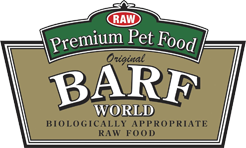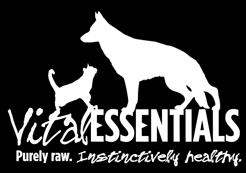Rhetorically speaking. In a book about the fate of human societies, the author framed the discussion with a rhetorical question, why did European decedents come to dominate Native Americans instead of the other way around, with Geronimo scalping the king of England. In this book, Garrad Diamond went on to answer this question with convincing insight. The discussion here could be framed by another rhetorical question: Why, if fat is the problem, has per capita consumption of fat gone down precipitously for the past 30 years, yet obesity has increased dramatically?
An ancient tale. Often someone will begin to relate a tale with the opening statement, to make a long story short. As we know, they frequently fall short of being short. I can promise you the version of the story today will be shorter than the actual story, which is four billion years old. All mammals have a set of genes and metabolic machinery that has been perfected by four billion years of evolution, and it is remarkably similar in all mammals, including our pets and ourselves. The most obvious feature of mammalian DNA is the incredible ability it bestows on us to survive on lack. As written in my book:
“A silent force powers each creature’s daily survival. It is all the thousands of enzyme systems faithfully transferred forward by genes to deal with lack or insufficiency. This can be first a lack of a basic nutrient, such as protein or copper, and secondly lack of subsequent or secondary products, such as amino acids or copper dependent enzymes. We can endure the lack of certain nutrients for months, and in some instances, years. Everyone has skipped a meal now and then, many fast for days on a voluntary basis, and the annals of history are full of tales of survival for weeks or even months on the most meager of ratios. What is even more intriguing is that the emaciation of months of starvation in adult is usually repaired without a trace in a relatively short time.”
For example. One example of mammalian ability to deal with lack is seen with dietary calcium. If the diet contains inadequate calcium, bone is dissolved to keep blood levels sufficient. Liver stores vitamin A so efficiently that one can function perfectly with no vitamin A in the diet for months and even years. Pregnancy can be sited as an example of this survival machinery at its most sophisticated. In mild starvation, peripheral tissue sensitivity to insulin drops measurably. The effect is to shunt critical blood sugar to the fetus, enhancing survival of the next generation at the temporary inconvenience of the mother. But if the starvation becomes severe, full insulin sensitivity returns to peripheral tissues. This at first seems incongruous, as it invariably results in abortion. But evolution knew what it was doing. In dire circumstances, pregnancy greatly complicates survival chances, so emphasis reverts to keeping the mother alive, to be a mother later in better times.
Perfected by lack. All mammals are especially perfected to deal with lack of energy, the foremost nutrient, after water. Regardless if talking of protein, fat or carbohydrate, there is a way to convert it to energy. Some amino acids (protein building blocks) are so quick to convert to energy that they are called glucogenic amino acids.
Ruined by excess. However, mammals, including pets and people, have no ability to deal with constant, excess starch and sugar. There is a logical explanation. As four billion years of evolution adapted all creatures to their surroundings, constant high levels of starch and sugar were never encountered. If you analyze anything that might constitute food or nourishment, anywhere in the world, it will be low in starch and sugar. The average starch and sugar content of meat, fish, eggs, insects, plants, fruits, berries, and vegetables is about 4%. Of course honey and berries are high in sugar. But honey was rarely encountered, and berries are mostly water. Eating berries to satiety actually does not overload metabolism, and even if it does, the berries don’t last but a few days in a primordial setting.
Hormone abuse. Contrast this 4% starch-sugar content of the primordial world with the average starch-sugar content of dry, expanded pet food, the type bought in the grocery store. Most all dry pet food is 40% carbohydrate. It should be obvious where this discussion is going; 4% versus 40%. A single large feeding a day of a diet that is 40% carbohydrate is in drastic conflict with what we have evolved to thrive on, and constitutes literal hormone abuse. Consider that there are eight hormones that raise blood sugar, yet only one that lowers it. From this, we can conclude that nature saw a great deal of importance to keeping blood sugar held up to a minimum safe level, and relatively little need to lower blood sugar. This one blood lowering hormone, insulin, was invented, so to speak, to capture the rare or occasional spike in blood sugar and save it as fat. In this regard, insulin served a critical role in our evolution, and as we know, insulin is very proficient at this assignment. The hormone insulin is identical, to the last molecule, in all mammals, and does the exact same thing in all creatures.
Dim light becomes sun light. As an analogy, suppose we had spent the last four billion years in a world of twilight and star light, when suddenly a brilliant sun appeared. Our eyes would struggle to deal with this new development. This is quite similar to what happened to mankind 10,000 years ago with the introduction of genetic modification of grain, and the advent of the agricultural revolution. For perspective, 10,000 years in the history of evolutionary is the same as a second in 5 days. Mammalian diets before the advent of farming were better. Dr. Winston Price traveled the world in the 1930s evaluating the health of specific populations. He found 11 societies that existed in two isolated groups at the same time. Each had portions of their group adhering to their historical hunter-gatherer lifestyle, and a portion that had adopted modern western diets. In all 11 cases, the hunter gatherers were healthier, with virtually no bone or dental problems. Skeletons of people living in the near east prior to 10,000 years ago are three inches taller than those that came later. The foraging of pre-agriculture humans provides an ideal model for us. It is precisely what we are evolved to do. Foraging has three inherent and important advantages; it keeps you moving (exercise), it invariably is automatic portion control, and it only serves foods of a chemical composition we are designed to eat (low in starch and sugar).
How did we get to this situation? Forty percent of our pets are overweight, not coincidentally the same obesity seen in all Americans. One of the reasons is due to a sneaky trick of Mother Nature. As an ingredient in the diets, fat has over twice the energy of anything else. This invites us to follow a false line of reasoning, as we assume lower fat is better. Proof of this, any grocery store is full of manufactured foods touted as low in fat, reduced fat, less fat. There is a coffee creamer known the world over as half and half, and it is available as fat free! Fat is not the problem. This has been known for over 100 years, and it has been proven unequivocally by the scientific community. People on a low carb diet can eat all they want yet lose weight, and have a healthier blood lipid profile.
What is the solution to the obesity epidemic in our pets? Americans spend more on pet care than the GDP of 87 countries. The concern is there, but evidently we are not correctly applying what we know. If weight loss is the problem we wish to address, it can be viewed as a three legged stool. The three legs are exercise, portion control and food composition. Sound familiar? Foraging should come to mind.
The solution is to feed as much raw, frozen, canned or freeze dried pet food as your budget will allow. Owners of several big dogs could rapidly go broke feeding a fresh or raw diet, but to the extent that the dry kibble can be reduced, or lowered as a percentage of the diet, nutrition will be better. Even if no low carbohydrate diets can be provided, at least feed the needed amount of dry in frequent, small servings.








Hi Dr. Patton,
I attended your seminar last night at the Bark and Scratch in Milwaukee, Wisconsin and I want to let you know I LOVED THE SEMINAR. Thank you so much for all of the great information. You delivered the information in a format that was easy to understand and which makes so much sense. Thank you, again, Nancy Riley.
Seems your recommendations are pretty *if-y* and I don’t look at pet nutrition as having options or qualifications attached to it.
The simplicity of raw meat, bones and organs (everything a carnivore needs) is clear to me because I’ve been doing it or 3 years. The move away from kibble is not a no-brainer.
Stop feeding kibble. Join the rawfeeding and rawfeeding chat Yahoo groups. Follow instructions. Watch dogs change their appearance, behavior, and run some blood work over time and it’s obvious the dog is being nourished! The rules are: 80% meat; 5% liver; 5% other organs; 10% bone.
Simple. Don’t make excuses for people to say, “I can’t afford it.” You can’t afford NOT to do it. Your pet has a short life anyway. Enhance it with proper nutrition.
Joining the groups I mentioned will also open up FOOD SOURCING for raw fed pets. The best way is to join a CSA and get your family meat. If you own the animal you can get everything you need from the meat. There are also raw meat pet suppliers (NOT the pre-packaged, not Oma’s, and not the commercial raw that isn’t much better than kibble) in the US who are now distributing pet food quite liberally in most states. Once you learn how to feed it, start looking for sources. They’re available!
Every dog and cat on the planet should eat raw meat, bones and organs. If you tell that to pet owners then they’ll find the way. Stop giving them options like, “… if you can afford it.” They’ll find the way. I did.
That is as simple as it get’s. I’m 76 on a fixed income & still have found a way to feed a raw diet. My breed is saint Bernard, his issues were food allergies. When I showed my wife the cost of one $150.00 blood test, it was a much easier sale. My Apollo is beautiful, healthy, & content.
Larry W. Coleman
Thank those of you who care
Your post is exactly why I dropped out of raw feeding groups. Full of overbearing and bossy people who know it all. Raw feeding is not hard but personally I prefer to get my information from sites such as Dr. Becker or Dogs Naturally and I enjoy the science behind it such as this article. All without the lecturing and bullying I observed on raw feeding sites. Tip: I buy my dogs meat directly from a local organic farmer. Much cheaper and high quality meat that you know the source.
How do i subscribe to your blog? I can’t seem to find the magic or not-so-magic link!!!
Helen
My ausie eats roadkilled deer, fresh rabbit, mice, pizza crust and most anything he gets his jaws on. Is this well balanced?
Dr Patton can you recommend a RAW brand to feed my pug? I live in KC, Mo trying to help my dog combat bladder cancer.
Thank You
Excellent goods from you, man. I have understand your stuff previous to and you’re just extremely magnificent.
I actually like what you’ve acquired here, certainly like what you
are saying and the way in which you say it. You make it enjoyable and you still take care of to keep
it smart